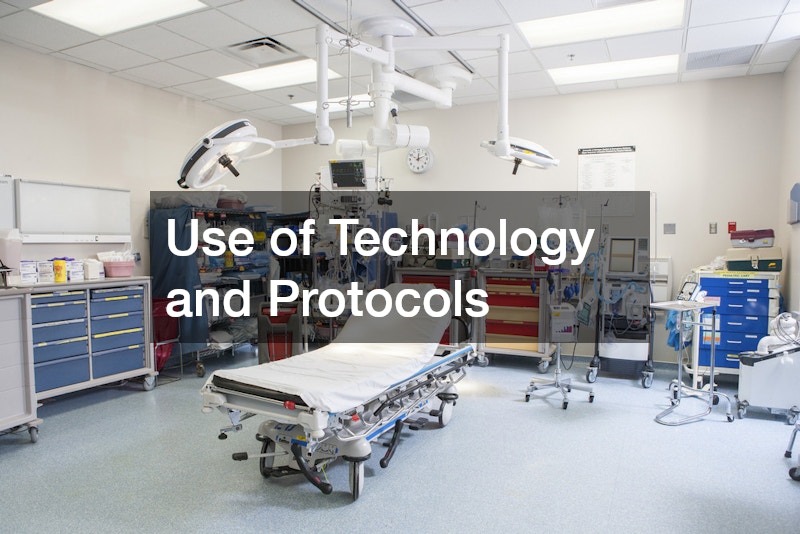The emergency room (ER) is a critical component of healthcare systems worldwide, playing an indispensable role in saving lives and providing urgent care. This article explores how ERs operate and answers common questions about their function and impact on patient survival. In understanding ER operations, one can truly appreciate the complexity and efficiency involved in handling emergencies.
Triage Process
Upon arrival at the emergency room, a crucial triage process takes place to ensure that those who require immediate attention are prioritized. Trained healthcare professionals evaluate each patient’s condition based on severity, using standardized criteria to allocate resources effectively. The objective is to quickly identify life-threatening issues, allowing for the most efficient use of medical expertise and equipment.
The triage process is a well-organized system intended to handle the unpredictability of emergency medicine. Typically, patients are categorized based on their symptoms and the urgency of care they require, a method that ensures fair and systematic treatment access. Effectively managing the triage process is critical because it impacts patient outcomes significantly, facilitating survival and recovery by minimizing wait times for urgent cases.
Immediate Diagnostic Procedures
In the fast-paced environment of an ER, immediate diagnostic procedures are critical in determining the right course of action. Technology has advanced to allow these diagnostics, such as imaging and blood tests, to be executed swiftly and accurately. This efficiency ensures that time-sensitive conditions are identified and treated promptly, preventing potential complications.
For patients exhibiting alarming symptoms, the speed of diagnostics can make the difference between life and death. Imagine a patient exhibiting stroke symptoms; rapid imaging can confirm the diagnosis and lead to swift intervention, significantly influencing recovery outcomes. The quick deployment of diagnostic tools is an integral part of modern emergency care protocols.
Initiation of Emergency Treatment
Once a diagnosis is made, the ER team initiates appropriate emergency treatments to stabilize the patient. The goal of this phase is to address immediate medical needs, whether through medication, procedures, or life-saving interventions like resuscitation. In a busy ER, every second matters, and this urgency is reflected in the rapid commencement of treatment.
ER departments often have pre-established protocols for managing common emergencies, improving the speed and efficacy of care. Emergency healthcare providers are specially trained to administer acute treatments, utilizing a mix of experience, technology, and teamwork. Readiness for a wide range of scenarios enables the ER to handle whatever crisis rolls in next.
Efficient Resource Allocation
ERs often face the challenge of managing high-volume patient influx efficiently while maintaining quality care. Efficient resource allocation is crucial, involving the strategic assignment of medical personnel, equipment, and space based on immediate needs. By leveraging data and predictive models, ER managers can foresee trends and adjust resources to manage peak periods effectively.
For instance, during flu season, an increase in patient volume can be anticipated and prepared for in advance. This preparation includes staffing adjustments, ensuring critical supplies are in stock, and coordinating with other departments for bed availability. Such detailed resource planning helps maintain order and calm in an inherently chaotic environment, ensuring each patient receives timely care.
Use of Technology and Protocols
In today’s digital age, technology provides ERs with powerful tools to enhance patient care and efficiency. Electronic health records (EHRs) enable instant access to patient histories, aiding rapid decision-making. Similarly, advanced monitoring systems keep real-time tabs on a patient’s vital signs, alerting medical staff to any critical changes.
Moreover, ERs utilize standardized protocols, which streamline complex processes and reduce the risk of errors. These protocols are borne out of evidence-based practices and continuously updated to reflect medical advancements. For instance, the use of rapid assessment protocols for sepsis reduces diagnosis time, saving invaluable minutes.
Coordination with Adjacent Departments
Coordination with other hospital departments is vital for ERs to function optimally. Interdepartmental collaboration ensures patients receive comprehensive care, which is often initiated in the ER but continued in other specialized units. This seamless transfer of patients from ER to surgery, cardiology, or other departments is critical for maintaining patient flow and quality of care.
Efficient coordination aids in managing bed availability, resourcing, and ensuring specialists are on hand when required. Patients with complex needs in the ER are often stabilized before transfer for specialized treatment, such as advanced imaging or surgical interventions. In essence, this enables a spectrum of care that extends beyond the immediate emergency room visit.
Infectious Diseases and Acute Illnesses
ERs also manage a variety of infectious diseases and acute illnesses, serving as gatekeepers to the wider healthcare system. From influenza outbreaks to sudden gastrointestinal infections, ERs provide critical initial care. Their ability to handle such cases prevents widespread contagion and manages public health risks effectively.
The emergence of illness symptoms often drives individuals to seek prompt ER attention for diseases presenting with urgent conditions. The ER’s role is to stabilize and provide appropriate care, which could range from administering fluids to starting antiviral medications. Their rapid response contributes significantly to improving patient outcomes during disease outbreaks.
The emergency room is a cornerstone of life-saving healthcare, relying on rapid assessment, strategic resource management, and collaboration to address diverse emergencies. By understanding its operations, we can appreciate the ER’s vital role in saving lives every day. The dedication and expertise of ER teams ensure that communities receive timely, effective medical help when they most need it.

